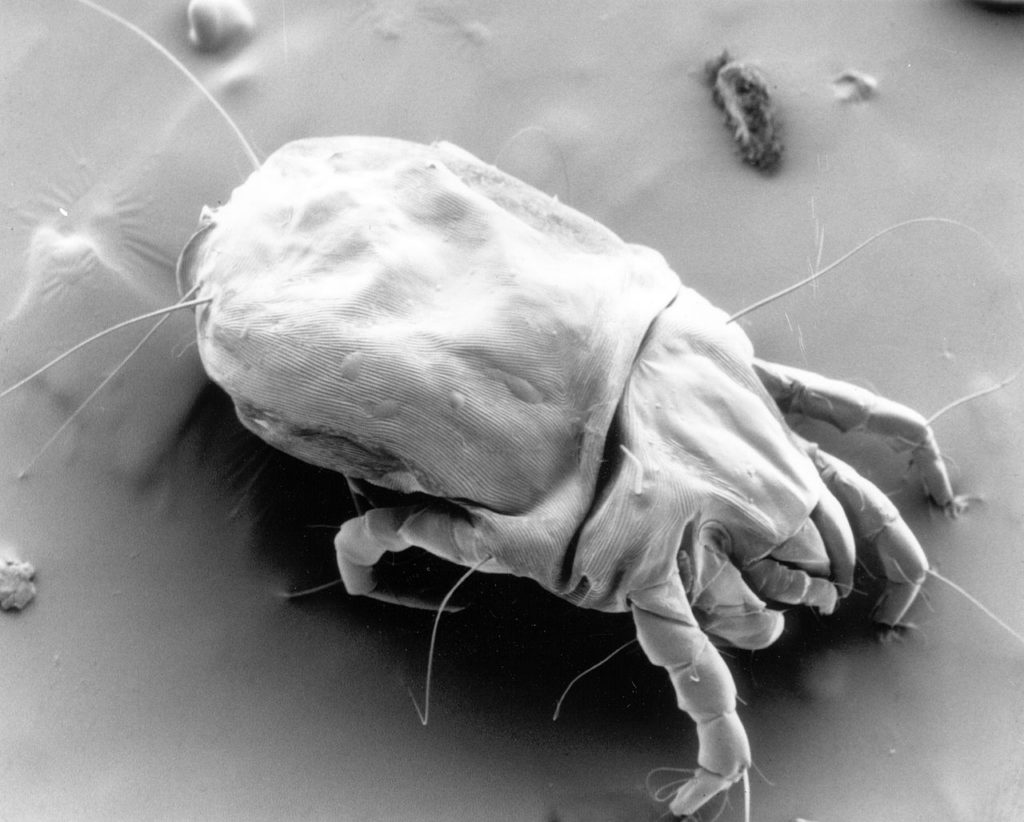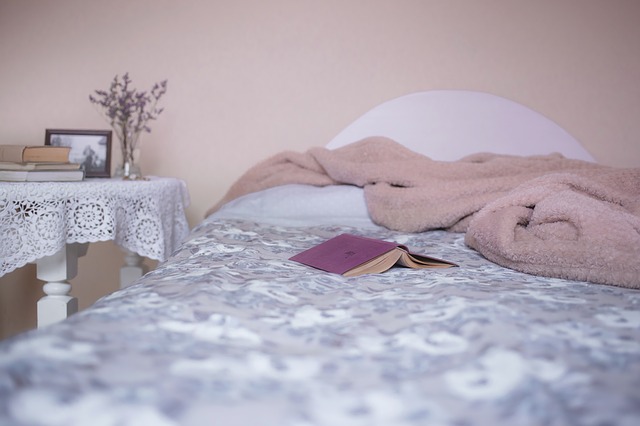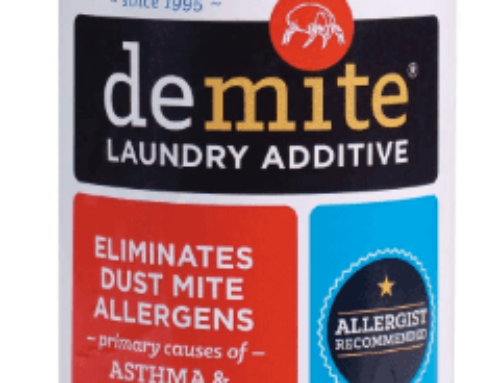Table of Contents
If an individual has asthma or allergies, dust mites might be a potential cause. Even though invisible to the naked eye, they can trigger an allergic reaction in some highly sensitive individuals. Unfortunately, dust mites are present in many houses all over the globe and it is impossible to eliminate them despite how clean a house is.

Dust mites are also the main culprits for year-round allergies and asthma as well as other respiratory conditions. Although it is impossible to completely eradicate the mites from your house, there are measures that can reduce the risk of allergic reactions and flare-ups of respiratory ailments.
Dust Mites: What Are They?
As microscopic bugs that thrive on household dust, dust mites are present in soft surfaces found around the house such as blankets, pillows, upholstered furniture, mattresses, and even stuffed animals.
Individuals with asthma might be allergic to dust but it is the droppings or fecal matter of dust mites together with their dead skin or scales that are the main culprits for an allergic reaction.
Upon inhalation of these combined particles, an individual can develop an allergic reaction or asthma symptoms that can be troublesome for most individuals.
As for the physical characteristics, a dust mite is only around one-quarter to one-third of a millimeter in size. As stated earlier, they are too small to be seen by the naked eye alone. If viewed using a microscope, they are seen as white bugs with 8 legs where they are closely related to spiders, ticks, and chiggers which are categorized as arachnids.
The dust mites thrive well in areas or environments with temperatures ranging from 68-77 degrees F (20-25 degrees Celsius). In addition, they also prefer areas with humidity levels of 70-80%. Generally, there are around 13 species of dust mites that are all capable of adapting to the environment inside the house.
What Do Dust Mites Feed On?
Dust mites mainly feed on tiny flakes of human skin that we shed daily. These flakes eventually seep deep into the interior layers of carpets, furniture, bedding and stuffed toys where the mites thrive. Remember that on average, an adult can shed up to 1.5 grams of skin in a day.
The skin cells or dander are often concentrated in mattresses, lounging areas and frequently used furniture and carpeted areas. These areas contain large populations of dust mites. In addition, the presence of pets such as dogs and cats produce more dander for the mites to feed on.
Dust mites have a lifespan around 2-4 months and seek out moisture to survive. The mites are comprised of 75% water and unable to drink, thus they depend on absorbing moisture from their environment via glands found at the base of their front legs. This is the reason why dust mites are not present in areas with dry climates, even in dusty spaces.
In most climates, the population of dust mites tends to increase during the summer season where the humidity is high and peak in the fall. This might be the reason why the rate of asthma cases significantly rises at this time of the year. The population eventually drops during winter where it is cold and dry. During late winter and early spring, the population of mites is at its lowest.
Top Places Where Dust Mites Grow

Beds are the main habitat where dust mites thrive. A frequently used mattress can harbor 100,000 up to millions of dust mites. The older mattresses or pillows are, the more mites are present.
Dust mites generally thrive in moist, warm surroundings such as the interior of a mattress. The mites prefer dander from both animal and human skin flakes. Around 80% of the material floating in the sunbeam are skin flakes shed by humans. Furthermore, carpeting in the bedroom and household upholstery hold large populations of dust mites.
Other places or objects where mites are likely to thrive include:
- Bedding and pillows
- Carpets
- Curtains
- Upholstered furniture
- Clothes
- Rugs
- Items that are covered with fabric
- Stuffed toys
Prevention is possible by limiting exposure. It is vital to pay close attention to the bedroom, especially the pillows and mattresses.
Despite that wide selection of objects and surfaces where dust mites are likely to thrive, there are measures that can limit potential allergic reactions or asthma flare-ups such as:
- Covering mattresses, pillows and upholstered furniture with zippered dust-proof covers
- Thoroughly wash blankets, sheets, and other bedding every week using hot water
- Replace carpeting with hard flooring
- Avoid using fabric drapes, plush rugs or other items that are difficult to wash regularly
- Use a dehumidifier to lower the humidity in the house
- Clean hard surfaces using a wet cloth or mop to avoid stirring up any dry allergens into the air
- Utilize HEPA filters to trap dust mites and other allergens but change the filters every 3 months to keep them effective.
How Dust Mites Affect Your Health?

Although the presence of dust mites can be unappealing, they are not actually harmful. Nevertheless, an issue of concern arises since the microscopic dead mites and their droppings are the main component of house dust that triggers allergic reactions in some highly sensitive individuals.
Remember that there is a hereditary predisposition to the allergy, but similar to other types of allergies, it can develop over time. Among sensitive individuals, inhaling the house dust allergen can instigate rhinitis or bronchial asthma. An individual who is allergic to house dust might also have allergic reactions to the fecal matter and cast skin of the dust mites.
Do I have a dust mite allergy?
The protein substances present in the fecal matter of dust mites produce antibodies in humans who are allergic upon inhalation or contact with the skin. This triggers the release of histamine which initiates symptoms such as nasal swelling, congestion, and irritation of the upper respiratory passages.
Some of the signs and symptoms of an allergy include:
- Sneezing
- Stuffed or a runny nose
- Red, itchy or watery eyes
- Coughing
- Itchy skin
- Itchy mouth, nose or throat
- Postnasal drip
Among those with asthma, the following symptoms might arise:
- Chest pain or tightness
- Difficulty breathing
- Wheezing or whistle-like sound when breathing out
- Difficulty sleeping due to coughing, shortness of breath or wheezing
The doctor utilizes skin tests and blood tests to confirm a possible dust mite allergy.
Final Thoughts
Dust mites can be a nuisance for those who have allergies or asthma. Luckily, there are several treatment options to manage an allergic reaction or asthma flare-up as well as preventive measures to lower the risk for these conditions.
If you’re allergic to dust mites, it is necessary to perform the steps to lessen the house dust, especially in the bedroom.
Related:
- How To Know If You Have Dust Mites At Home
- How To Remove Dust Mites From Home Naturally
- How To Kill Dust Mites in Your Mattress
- Dust Mite Allergy Symptoms – Look Out For These Signs
- Best Air Purifier For Dust Mites




Hello Kenny –
Wow – this was a very informative post on dust mites. It’s kind of freaky to think there are thousands of those thing in our carpets, beds, pillows and even stuffed animals. It’s also interesting that they are 75% water, so they are unable to drink. It’s amazing what goes on in the microscopic level! I guess its best that we don’t see them.
And wow – I didn’t know us humans shed that much dead skin!
Thank you for sharing this info on dust mites. I really was not aware of all these facts about them and how they are in our homes.
Blessings!
Hi,
I’m glad the info helps.
Cheers,
Kenny